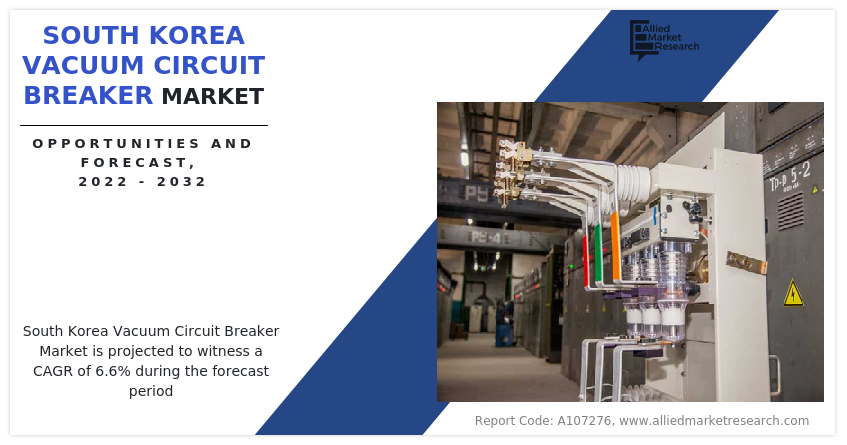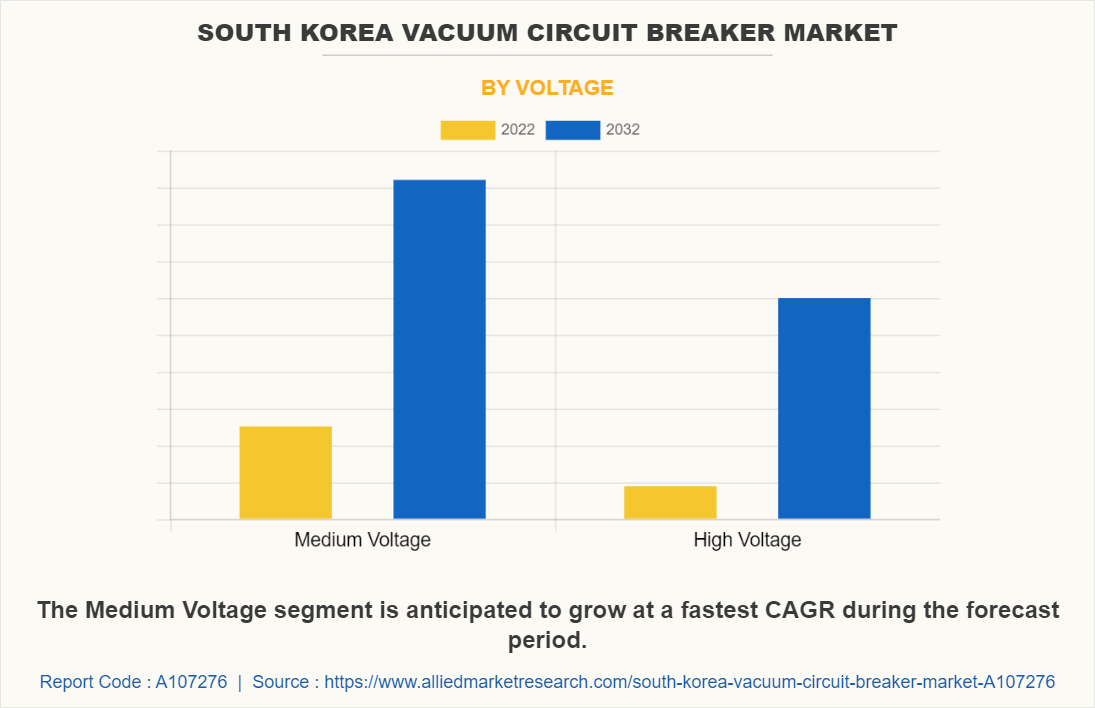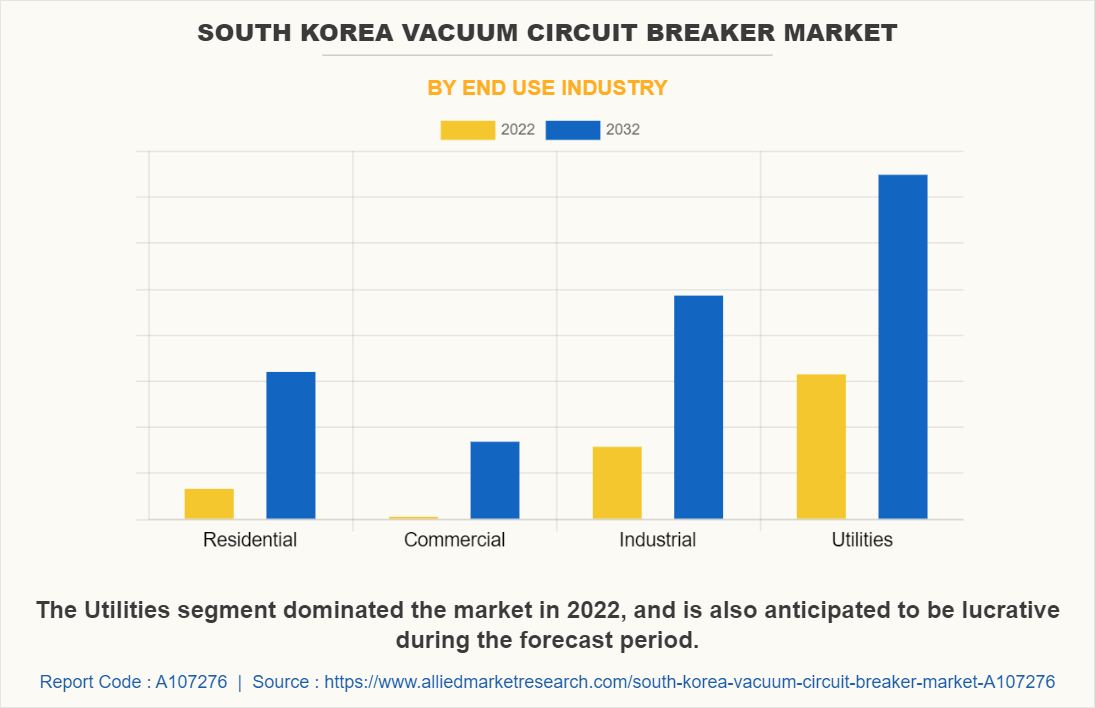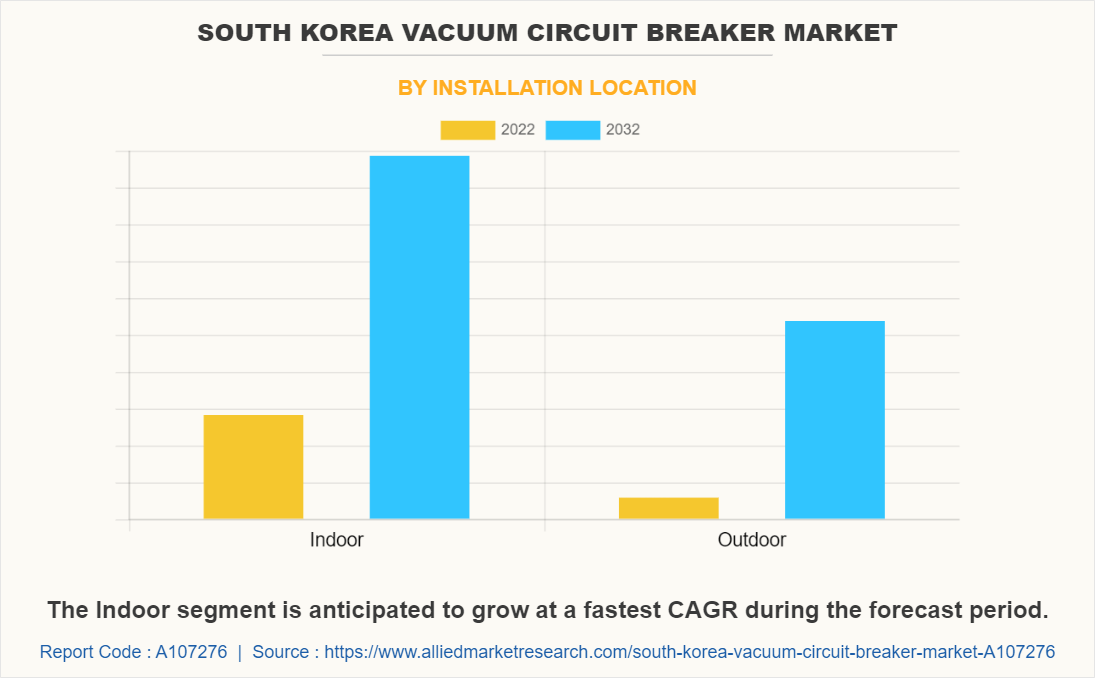The South Korea Vacuum Circuit Breaker Market, a labyrinth of intricacies and complexities, represents a dynamic landscape of electrical infrastructure. With multiple variables at play, including voltage, installation location, and end-use industry, this market is a conundrum waiting to be explored. In this enigmatic realm, we delve deep into the dynamics of the market, decoding the driving factors, restraints, and opportunities that define its trajectory. The South Korea Vacuum Circuit Breaker Market is a tapestry woven with numerous threads, each representing a unique dynamic. To understand its nuances, we must first unravel the driving factors that propel this market forward. At the heart of this enigma is the ever-growing demand for electricity, stemming from South Korea's thriving residential, commercial, industrial, and utilities sectors. The residential segment, characterized by the constant need for power in households, has become a fundamental driver of this market. The increasing population, coupled with the digitalization of homes and the proliferation of electronic devices, has placed immense pressure on the electrical grid, necessitating the use of efficient circuit breakers.

The market scenario in South Korea reflects the balance between traditional industries and emerging sectors. The coexistence of older, legacy systems and new, cutting-edge technologies makes this market a complex amalgamation of the past and the future. Market players must navigate this intricate landscape by offering solutions that cater to both paradigms. As the market evolves, growth will be propelled by innovative research and development initiatives. The development of compact and lightweight circuit breakers that offer high performance will be a defining factor. Manufacturers investing in such breakthroughs will have a competitive edge in this complex market.

In the commercial sector, the relentless expansion of businesses, coupled with the integration of advanced technologies, has led to a surge in power requirements. This sector demands reliable circuit breakers to ensure uninterrupted operations. It is a factor that amplifies the demand for vacuum circuit breakers in the South Korean market.

The industrial sector, with its diverse manufacturing operations, presents another facet of this complex market. Industrial facilities require circuit breakers that can withstand heavy loads and operate seamlessly in arduous conditions. Vacuum circuit breakers have proven their mettle in this domain, contributing to market growth. The utility sector, encompassing power generation, transmission, and distribution, remains a pivotal component of the South Korean electrical landscape. With the need for robust and reliable circuit breakers, utilities have consistently driven demand in the market. However, even as these factors propel the market forward, the labyrinth is fraught with restraints that must be navigated. Regulatory hurdles and compliance standards form an intricate barrier to entry. The intricacies of adhering to safety and environmental norms pose a challenge to market players. Moreover, the complex nature of vacuum circuit breakers, which demand skilled personnel for installation and maintenance, acts as a restraint, limiting the market's reach.

Yet, within these challenges lie opportunities, akin to hidden treasures in this complex labyrinth. The South Korea Vacuum Circuit Breaker Market is on the cusp of transformative growth, primarily driven by the adoption of smart grid technologies and the increasing emphasis on renewable energy sources. The market's trajectory is set to change as it aligns with the global shift towards sustainable energy solutions. The promise of clean energy production and efficient distribution holds the key to future growth. In a market as perplexing as South Korea's Vacuum Circuit Breaker Market, anticipating future trends is akin to foreseeing an unfolding mystery. The evolution of this market hinges on a multitude of factors, including technological advancements, policy changes, and economic fluctuations. Yet, amid this uncertainty, certain trends and opportunities emerge as guiding stars. One such trend is the rapid digitization of electrical infrastructure. With the advent of the Industrial Internet of Things (IIoT), the demand for smart circuit breakers has grown exponentially. These devices not only provide real-time monitoring and control but also contribute to predictive maintenance, reducing downtime and enhancing efficiency.
Furthermore, the South Korean government's emphasis on green energy and the reduction of greenhouse gas emissions presents a promising opportunity for vacuum circuit breaker manufacturers. As the country transitions towards cleaner energy sources, the need for circuit breakers capable of handling renewable energy fluctuations becomes paramount. A segmental overview of the market reveals that medium voltage vacuum circuit breakers are gaining traction in South Korea. Their versatility and applicability across various industries are driving their adoption. High voltage circuit breakers, on the other hand, are crucial for power transmission and distribution and continue to be in demand.
Within this enigmatic landscape, qualitative insights weave the intricate tapestry of progress. Research and development efforts are at the forefront, striving to untangle the complex web of challenges in the South Korea Vacuum Circuit Breaker Market. New product development is the cornerstone of innovation, offering market players a unique advantage. Consumer and end-user perceptions play a significant role in shaping the market's trajectory. With increasing awareness of energy efficiency and environmental impact, consumers are inclined towards products that align with sustainability goals. Market players can leverage this sentiment to introduce eco-friendly vacuum circuit breakers that cater to the discerning consumer. Pricing strategies, often a puzzle in themselves, are a vital aspect of this market. Manufacturers need to strike a delicate balance between affordability and quality. As the market evolves, competitive pricing that doesn't compromise on performance will be the key to success. Product differentiation is another strategy that can help manufacturers stand out in this complex landscape.
Porter's Five Force Analysis sheds light on the competitive dynamics of the South Korea Vacuum Circuit Breaker Market. Within this complex ecosystem, the bargaining power of suppliers remains high. The intricate technology and specialized knowledge required for manufacturing vacuum circuit breakers consolidate the position of suppliers. Buyer power, on the other hand, is influenced by the diverse range of options available in the market. The complex interplay between features, price, and performance gives buyers ample choices. However, the highly specialized nature of the product maintains a degree of supplier influence.
The threat of new entrants is limited due to the complexity of vacuum circuit breaker manufacturing. The need for substantial capital investment and the stringent regulatory requirements act as barriers to entry. The existing market players have established themselves, adding to the difficulty for newcomers. Substitute products, though present, do not pose a significant threat. Vacuum circuit breakers offer a unique combination of performance and reliability that is difficult to replicate with substitutes. The complexity of these devices makes it challenging for substitutes to gain a foothold in the market. Rivalry among existing players is intense, driven by the complex nature of the market. Market players continuously innovate and differentiate their products to gain a competitive edge. This intricate competitive landscape keeps the market dynamic and fosters innovation.
A SWOT analysis of the South Korea Vacuum Circuit Breaker Market unveils the intrinsic factors that define its complexity.
Strengths lie in the advanced technology and innovation that South Korean manufacturers bring to the market. Their ability to develop cutting-edge vacuum circuit breakers, along with robust domestic demand, forms a solid foundation. Weaknesses are rooted in the intricate regulatory landscape and the challenges associated with compliance. Market players must navigate this complexity, which adds a layer of intricacy to the market. Opportunities are abundant, driven by the adoption of smart grid technologies, renewable energy integration, and the quest for cleaner energy solutions. The market's ability to adapt to these trends is essential for future growth. Threats emanate from the global economic landscape, which can introduce unpredictability. Economic fluctuations and geopolitical dynamics can create uncertainty in the South Korea Vacuum Circuit Breaker Market.
In conclusion, the South Korea Vacuum Circuit Breaker Market is a complex puzzle, where voltage, installation location, and end-use industries intersect, creating a dynamic and intricate landscape. The market dynamics reveal the interplay of driving factors, restraints, and opportunities that shape its trajectory. As we navigate this labyrinth, we find future trends and market opportunities that hold the promise of transformative growth. Qualitative insights underscore the importance of new product development, consumer perceptions, and pricing strategies. Porter's Five Force Analysis and a SWOT analysis provide a comprehensive view of the market's competitive dynamics and intrinsic strengths and weaknesses. In this intricate realm, market players must thread their way through the complex tapestry, leveraging innovation, adaptability, and a keen understanding of consumer needs to thrive in this enigmatic landscape.
Key Benefits For Stakeholders
- Enable informed decision-making process and offer market analysis based on the current market situation and estimated future trends.
- Analyze the key strategies adopted by major market players in South Korea's vacuum circuit breaker market.
- Assess and rank the top factors that are expected to affect the growth of the South Korea vacuum circuit breaker market.
- Top Player positioning provides a clear understanding of the present position of market players.
- Detailed analysis of the South Korea vacuum circuit breaker market segmentation assists to determine the prevailing market opportunities.
- Identify key investment pockets for various offerings in the market.
South Korea Vacuum Circuit Breaker Market Report Highlights
| Aspects | Details |
| Forecast period | 2022 - 2032 |
| Report Pages | 90 |
| By Voltage |
|
| By Installation Location |
|
| By End Use Industry |
|
| Key Market Players | Tavrida Electric, Eaton Corporation, Siemens AG, LS Electric Co., Ltd., ABB Ltd., Toshiba Corporation, Schneider Electric SE, Fuji Electric Co., Ltd., Meidensha Corporation, Hyundai Electric & Energy Systems Co., Ltd. |
The South Korea Vacuum Circuit Breaker Market is projected to grow at a CAGR of 6.56% from 2022 to 2032
LS Electric Co., Ltd. , Hyundai Electric & Energy Systems Co., Ltd. , ABB Ltd. , Siemens AG , Schneider Electric SE , Fuji Electric Co., Ltd. , Toshiba Corporation , Eaton Corporation , Tavrida Electric , and Meidensha Corporation are the leading players in South Korea Vacuum Circuit Breaker Market
1. Enable informed decision-making process and offer market analysis based on current market situation and estimated future trends.
2. Analyze the key strategies adopted by major market players in south korea vacuum circuit breaker market.
3. Assess and rank the top factors that are expected to affect the growth of south korea vacuum circuit breaker market.
4. Top Player positioning provides a clear understanding of the present position of market players.
5. Detailed analysis of the south korea vacuum circuit breaker market segmentation assists to determine the prevailing market opportunities.
6. Identify key investment pockets for various offerings in the market.
South Korea Vacuum Circuit Breaker Market is classified as by voltage, by installation location, by end use industry
Loading Table Of Content...
Loading Research Methodology...



